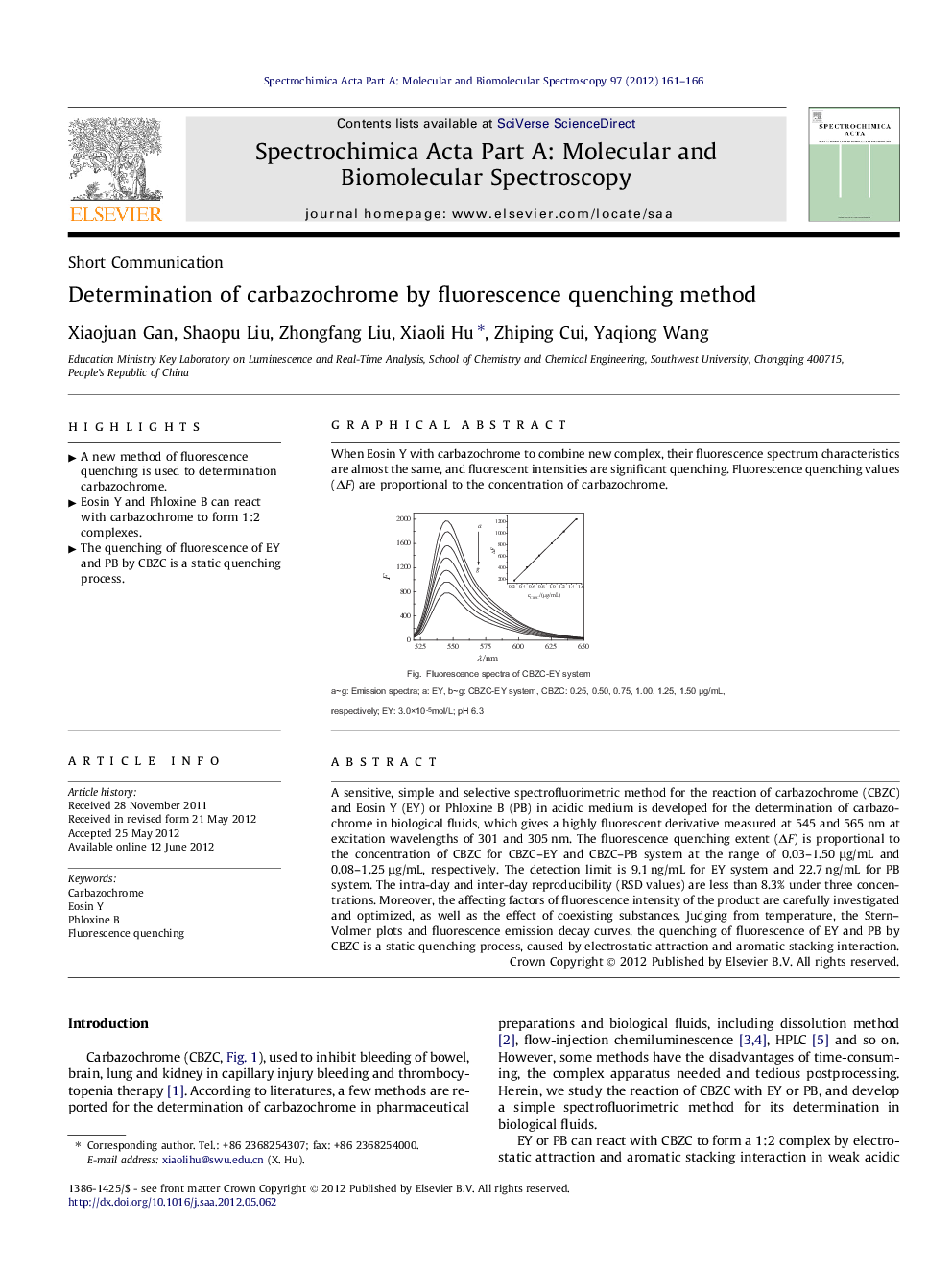| Article ID | Journal | Published Year | Pages | File Type |
|---|---|---|---|---|
| 1232297 | Spectrochimica Acta Part A: Molecular and Biomolecular Spectroscopy | 2012 | 6 Pages |
A sensitive, simple and selective spectrofluorimetric method for the reaction of carbazochrome (CBZC) and Eosin Y (EY) or Phloxine B (PB) in acidic medium is developed for the determination of carbazochrome in biological fluids, which gives a highly fluorescent derivative measured at 545 and 565 nm at excitation wavelengths of 301 and 305 nm. The fluorescence quenching extent (ΔF) is proportional to the concentration of CBZC for CBZC–EY and CBZC–PB system at the range of 0.03–1.50 μg/mL and 0.08–1.25 μg/mL, respectively. The detection limit is 9.1 ng/mL for EY system and 22.7 ng/mL for PB system. The intra-day and inter-day reproducibility (RSD values) are less than 8.3% under three concentrations. Moreover, the affecting factors of fluorescence intensity of the product are carefully investigated and optimized, as well as the effect of coexisting substances. Judging from temperature, the Stern–Volmer plots and fluorescence emission decay curves, the quenching of fluorescence of EY and PB by CBZC is a static quenching process, caused by electrostatic attraction and aromatic stacking interaction.
Graphical abstractWhen Eosin Y with carbazochrome to combine new complex, their fluorescence spectrum characteristics are almost the same, and fluorescent intensities are significant quenching. Fluorescence quenching values (ΔF) are proportional to the concentration of carbazochrome.Figure optionsDownload full-size imageDownload as PowerPoint slideHighlights► A new method of fluorescence quenching is used to determination carbazochrome. ► Eosin Y and Phloxine B can react with carbazochrome to form 1:2 complexes. ► The quenching of fluorescence of EY and PB by CBZC is a static quenching process.
